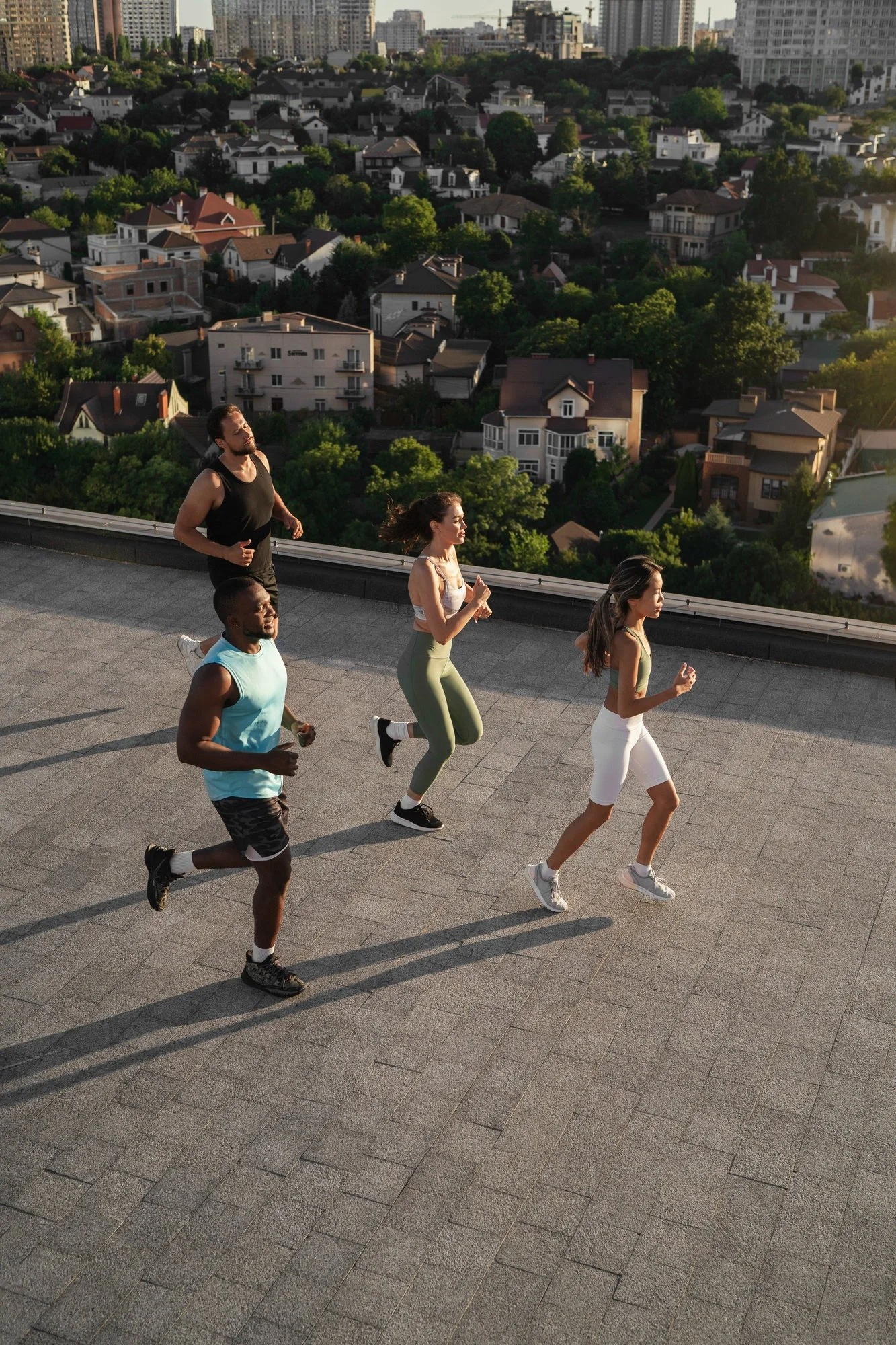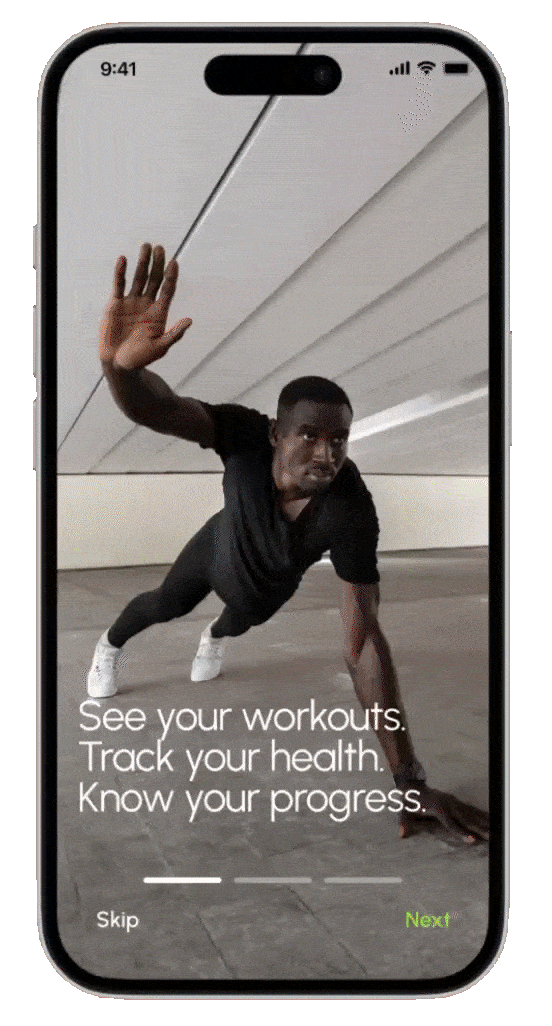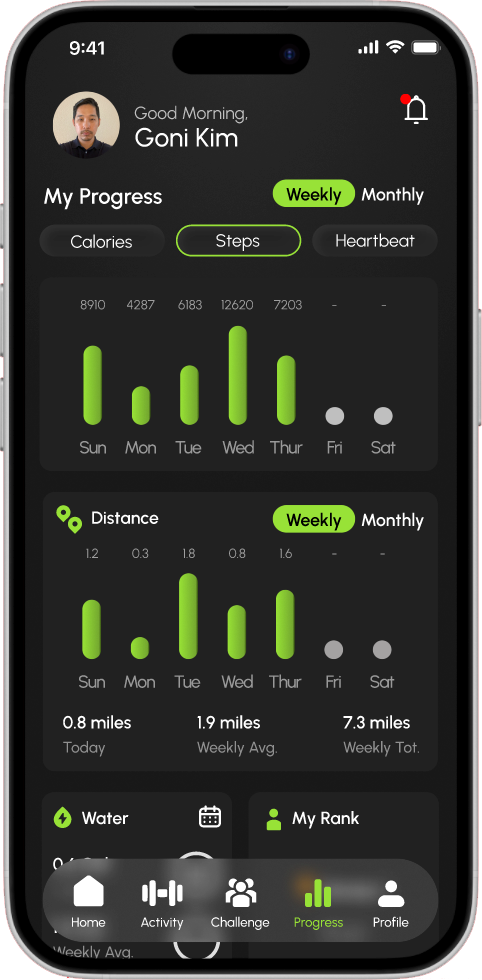Making Fitness Fun with Easy Tasks and Team Competition.
A low-barrier, team-driven fitness app designed to motivate consistent movement through simple daily tasks, friendly challenges, and lighthearted competition.
Design Focus
Accessibility
Designing low-barrier fitness tasks that anyone can start with, simple movements that build consistency without pressure.
Team Movitation
Creating a supportive team structure where progress, encouragement, and shared goals drive continuous engagement.
Light Gamification
Using gentle competition, points, streaks, and small challenges to keep the experience fun without overwhelming users.
-
People who exercise want something to work out virtually with friends and engage in lighthearted challenges so they can stay motivated, maintain consistency, and enjoy exercising without feeling pressured or judged
-
Project Case Study
Duration 3 months
Role UX Designer
Responsibilities User Interview, User Testing, UI, Prototyping

Design Process
-
Conducted interviews with ten people regardless of their fitness level or interest to understand universal barriers, motivations, and expectations around maintaining consistent exercise habits.
-
Reviewed leading fitness and social workout apps to identify market gaps, common frustrations, and opportunities for a low-barrier, team-driven experience.
-
Created quick, low-fidelity sketches to explore core flows such as daily tasks, team creation, and point tracking, allowing rapid iteration on structure and usability.
-
Tested the early prototypes with users to validate task clarity, motivation triggers, and navigation; refined the flow to reduce friction and keep the experience lightweight.
-
Developed polished, high-fidelity designs that incorporated visual hierarchy, interaction details, and gamified elements aligned with the app’s low-threshold fitness concept.
Interviews
Competitive Analysis
Competitive Analysis
Opportunity for Inclusive Team Challenge
Most apps prioritize individual tracking or one-on-one competition. There is a clear gap in creating meaningful team versus team experiences that balance fun, fairness, and accessibility.
Research Objectives
Understand how competitors design and support competitive or collaborative fitness features.
Identify strengths and weaknesses in current engagement strategies.
Reveal unmet needs and opportunities that can validate or challenge the assumptions behind the new app concept.
Assumptions Being Tested
Users are motivated by social accountability and teamwork rather than only personal metrics.
Current apps focus too much on individual progress or high-performance athletes.
There is a lack of accessible and inclusive ways to compete in teams across different activity types.
Competitors Selected
Strava (Direct)
Fitbit (Direct)
Nike Run Club (Indirect)
Peloton App (Parallel)
Zwift (Parallel)
Full Process
The analysis began by reviewing official app pages, store listings, and third-party articles to understand each competitor’s core features and user experience. User feedback from Reddit, Trustpilot, and app store reviews was then gathered to capture reactions to competition, motivation, and social interaction. These insights were mapped into a feature matrix in Figma that compared competition modes, social connectivity, gamification, and accessibility. Clear patterns emerged, revealing strengths and weaknesses that informed design implications for a more inclusive and team-focused fitness experience.
Motivation through Social Accountability
Users consistently express that competition and camaraderie drive motivation more effectively than solo tracking.
Accessibility and Fairness as Key Differentiators
High hardware costs (Peloton, Zwift) and performance-oriented environments (Strava) exclude casual users. Designing for inclusivity, both technically and socially, presents a strong opportunity for differentiation.
Age
27
Education
BFA in Animation
Location
San Francisco, CA
Pain Points
Finds it hard to stay motivated without social accountability.
Feels most fitness apps focus on individual stats rather than teamwork.
Gets discouraged when challenges feel overly competitive or dominated by elite athletes.
Feels disconnected when his friends use different fitness platforms.
Goals
Stay consistent with workouts by engaging in friendly team-based challenges.
Feel connected to others even when exercising independently.
Experience competition that’s motivating, not intimidating.
Bio
Sarah, 27, is an animator in San Francisco who stays active but often loses consistency when project deadlines get intense. She discovered during the pandemic that working out with friends, especially through virtual challenges, keeps her far more motivated than going solo. She enjoys tracking her progress with visual data, but finds most fitness apps too focused on individual achievement.
What keeps her engaged is a sense of camaraderie and light, friendly competition. She prefers flexible workouts like running, cycling, and short HIIT sessions, using her phone and smartwatch to track activity.
Sarah Jones
“Working out is easier when I’m not doing it alone.
I love a little competition. It keeps me accountable.”
Turning Insight Into Structure
Over the course of two weeks, I developed the sitemap, wireframes and then gathered additional insights through usability testing.
Implications for Final Design After Usability Testing
Design Implications
Ensure all interactive elements are appropriately sized for easy tapping.
Create a scalable layout for workout types to accommodate future additions without breaking the interface.
Balance features between health tracking and exercise variety, prioritizing user motivation and engagement throughout the app.
Key Insights
Interactive elements, such as the small circles representing days, were too small for easy selection. Users need larger touch targets to prevent accidental clicks.
The number and variety of workout types should be flexible, as users may request additional exercises. A scalable design is necessary to accommodate growth.
There is a trade-off between focusing on health tracking features and offering a wide variety of exercises. Users want motivation and engagement above all.
“Having someone else involved creates accountability and makes the experience more enjoyable, so you’re less likely to skip a session if you know others are counting on you."
— T. Lee

High-fidelity mockups highlight a balance of usability, gamification, and team engagement for maximum impact.
Where Design Meets Motivation
RELAY keeps the energy moving, making fitness social, fun, and motivating.
Reflection
What are the next steps for Relay?
My next steps focus on refining the scoring system and finalizing challenge mechanics. The goal is to keep users consistently active while ensuring that the system is fair and motivating.
How does this shape the overall vision for Relay?
Through iteration and feedback, Relay will become a platform where teamwork and shared motivation naturally reinforce positive fitness habits, turning daily workouts into a rewarding, collaborative experience.
What is the intended outcome for users?
The scoring and challenge mechanics aim to create a fun, motivating, and socially engaging experience. Users should feel encouraged to participate regularly, enjoy friendly competition, and support one another.
Who will provide feedback on these systems?
I will collaborate with fitness experts, gamification specialists, and potential users. Their insights will help validate the scoring mechanics and challenge rules to ensure they are both effective and engaging.
How will the scoring system be designed?
I plan to research scoring algorithms in depth and define clear rules for how points are earned or lost based on activity or inactivity. The design will balance fairness with meaningful incentives that encourage consistent engagement.




























